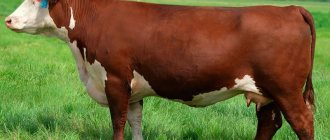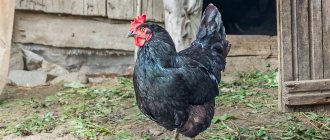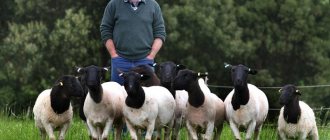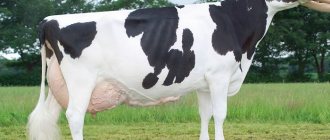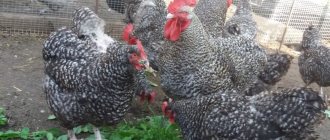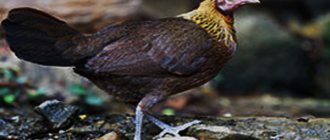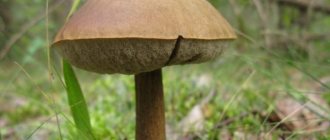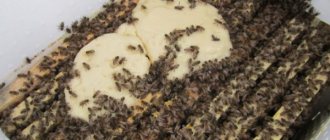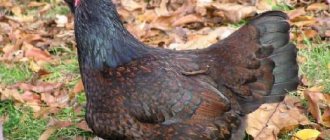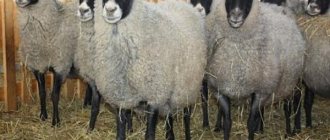Breed characteristics
Their characteristics will help you get acquainted with the main properties of the Karnika bee breed:
- The majority of bees are characterized by a peaceful nature. But there are populations prone to aggression.
- Thanks to the calm behavior of the carnika, the beekeeper can inspect the hives without resorting to the use of a protective net or fumigation. At the same time, the insects remain in their places, not reacting to people at all.
- Representatives of the breed are very hardworking. They work not only in sunny weather, but also with the slightest clearing in rainy and foggy weather. In addition, they always return to the hive with a full bribe and quickly switch to the best options for sources of honey collection.
- They begin collecting nectar already at 10 degrees Celsius and continue work until late autumn.
- Insects overwinter in small families. They begin to develop rapidly when the first spring warmth appears, which allows for early honey collection.
- Insects survive wintering without problems, even if very low temperatures persist for a long time.
- Increased vitality allows you to emerge from wintering with a minimum amount of death.
- They tolerate transportation without problems, during which the temperature in the hive almost does not increase.
- Despite the increased tendency to form swarms, when anti-swarm measures are carried out, they quickly go into working condition and begin collecting nectar.
- Resistant to parasitic diseases. Under particularly unfavorable conditions they can be susceptible to nosematosis.
- They easily navigate the terrain and have excellent coordination, which makes it possible to keep carnikas in pavilions.
- They quickly settle into new housing.
- They do not fly into other people's hives and do not steal honey. At the same time, they perfectly protect their home.
Some characteristic features of carnival bees distinguish them from their relatives:
- They produce very little propolis (one might say that this product is completely absent), since they almost never use it.
- Honey signet has a dry consistency and is white in color. True, this sign can vary.
- The long proboscis makes it possible to obtain nectar even from flowers that are inaccessible to other bees.
- Very economical and careful with food. Immediately after the cessation of honey collection, they begin to use food moderately, which allows them to leave the wintering area with minimal losses.
- They have excellent construction abilities. With the onset of spring, the bee colony begins to build honeycombs and over the course of the season, even with small bribes, they rebuild a significant area.
- Karnika queen bees are distinguished by increased fertility, which is especially valued by beekeepers.
- The breed is prone to quiet replacement of the queen bee. This process occurs unnoticed, without affecting the life of the bee colony.
- With a good honey harvest, they do not stop working on collecting bribes and building honeycombs, even in preparation for swarming.
- They have excellent fixed memory, due to which the behavior of insects does not depend on external conditions.
Wintering
There is an opinion that southern breeds of bees, which include Karnika, are poorly adapted to wintering in our latitudes. Factors that discourage beekeepers from breeding the breed include:
- Low temperatures in the area;
- Long period of non-flying;
- Brood laying in the early stages.
It is believed that all this does not contribute to a safe exit from wintering and building up strength in families before the main honey harvest. This somewhat incorrect opinion hinders the spread of the peace-loving bee in the middle and northern latitudes.
However, winter with prolonged frosts that return in the spring, sharp temperature fluctuations are signs not only of our latitudes, but also of mountainous areas. Since karnika was born on mountain slopes, it is difficult to surprise it with such conditions.
Thousands of years of natural selection and modern developments have perfectly adapted this kind bee to rather harsh external conditions. It is these features that allow it to winter well even in small families. At the same time, one is struck by the rapid development of the family and the minimal recovery time after winter, as soon as fine days appear.
Karnika makes excellent use of the clear intervals in the rainy periods. Meanwhile, rainy days do not present any particular difficulties for her. Insects have a high rate of orientation on the ground both on cloudy and foggy days.
The queens of this species are adapted by nature itself to begin laying eggs even with poor bribes. This circumstance allows the karnika to prepare well and grow a family for a full bribe.
Varieties
The Karnika bee breed has several varieties, which are characterized by some distinctive features: character, behavior, productivity, and breeding characteristics.
Pawn
This is the oldest strain of the breed. Insects are able to take bribes from any honey plants and simultaneously work with several types of plants. They are very calm, assiduous and peaceful. Development begins very early and does not stop until October. The peak of development occurs in May.
Bees live in large families, which allows them to effectively use more than 2-3 bribes per season. They are characterized by a very high degree of swarming. But it is easily corrected with special means. If honey is collected in time, swarms will not form.
With purebred breeding, the pawn retains all its inherent properties. Hybrids inherit characteristic characteristics in the first two generations.
Sklenar
Insects have rare perseverance, but are capable of showing aggression. Development is gradual, most effective for collecting nectar from late honey plants. They work great even in September. They create large and medium-sized bee colonies. Swarms form extremely rarely.
Genetic properties are stable only when breeding purebred insects. Already in the first generation of hybrids, a splitting of characteristics is observed.
Troyzek
A distinctive feature is the intensive development of the offspring, which is observed in the spring, but only in the presence of pollen. If there is no pollen, the queen bee may stop scarring. Insects are very clean and hardworking, and are not prone to forming swarms.
The strain is genetically unstable. During hybridization, the original qualities are completely lost.
Hollesburg
Bees are characterized by a special work ethic. Their productivity is significantly higher than that of other subspecies.
Which breed of bees is better than Karnika or Karpatka?
Carpathian bees have many advantages: the insects are peaceful, swarm insignificantly, tolerate the winter well and are highly productive during the honey harvest period.
Unlike carnikas, in case of a shortage of food, carpathians show a tendency to raid other people's hives and steal. In cold climates, the character of the breed undergoes significant changes: the bees become very aggressive.
It is incorrect to say that one of the breeds is worse or better, however, it is necessary to carefully consider the choice taking into account the future location of the apiary: for temperate climate conditions, characterized by early and lush flowering of plants, the Carpathian is best suited. It is more advisable to place Karnika in regions with a cool climate and periodic flowering of honey plants.
Setting up an apiary and maintaining a carnival is possible even with a small farmstead. Bees will feel comfortable in a hive with a vertical nesting extension. When caring for insects, you should definitely take into account the fact that carnika overwinters in small families, and it is a big mistake to try to combine several genera: the scarring of the queen will last longer and food consumption will increase.
Appearance
Most bees are bright gray with a silver tint. The hairs are short, the border is thick. But in some individuals the main color is diluted with yellowness, which, according to many beekeepers, is considered completely acceptable. But there is another opinion, according to which purebred insects should only be gray.
The description of the Karnika bee breed notes that the insects are very small - 15-18 millimeters. Worker insects weigh about 100 milligrams, queens weigh 200 milligrams, and drones weigh 230 milligrams. At the same time, bees have a very long proboscis, reaching a length of 6-7 millimeters.
What do bees get sick with and how to treat them?
The breed is resistant to many diseases, including rot and nosematosis. Brood diseases are as rare as bee diseases. But recently, many cases of ascospherosis have been recorded in different regions. Calcareous offspring appears when the larvae and pupae are infected with a certain fungus, which appears when the climate is too humid and the breeder lacks hygiene when working with bees. At the last stage, the larva turns into a lump of lime.
Karnik's bees simply cannot cope with it on their own, it will only grow throughout the hive, which requires the help of a beekeeper. The first thing to do is remove the frame with the fungus. Then the infected frame and evidence are treated with any available means, suitable: “Nystatin”, “Ascocin”, “Unisan”, you can also use garlic wrapped in gauze. The latter should simply be hung in the corners of the hive and some parts of the frames.
Advantages and disadvantages
Karnika bees have many positive qualities due to which they are valued by beekeepers:
- peaceful nature, which greatly facilitates the maintenance of the apiary;
- high fertility;
- increased productivity (30% more compared to other breeds);
- constant performance regardless of the type of honey plant and weather conditions;
- easy handling;
- excellent memory;
- undemanding conditions of detention;
- good transportability and quick adaptation to external changes, which makes them ideal inhabitants of mobile apiaries;
- resistance to temperature changes, which facilitates easy wintering;
- economy when using feed;
- low susceptibility to diseases and parasites.
Along with numerous advantages, there are also some disadvantages of the breed, but they are insignificant. The main drawback is the tendency to swarm, but this is easily eliminated.
Thanks to the above advantages, the beekeeper's costs are minimal when maintaining carniki. The cost of purchasing bee packages and maintenance is insignificant compared to the profit.
Breeding Features
In reviews of karnika bees, beekeepers point out their unpretentiousness and low purchase and maintenance costs, which more than pay for themselves in a short time.
Bee packages with the carnika family are purchased in special stores. The kit includes:
- 3 dadan frames with larvae and 1 covering frame;
- Karnika bee family;
- queen bee under 1 year of age with a mark on the back;
- food – kandi flatbread weighing 1.5 kg;
- water with a special, insect-friendly drinking device;
- package.
In March-May, carnika bee colonies develop rapidly, the highest peak being June-July. They create large families; the nest can occupy up to 3-4 buildings.
The nuances of planting and replacing the uterus
Old queens are less active, which leads to deterioration in fertility, decreased honey yield, the development of diseases and problems with wintering. Therefore, it is necessary to plant new queen bees. But in order for the new queen to successfully settle in, some factors need to be taken into account.
The optimal time for replanting is spring and early summer. During this period, there are more young insects in the hive than old ones, which makes survival easier. It is also possible to replant at the end of summer and beginning of autumn, when the inhabitants of the hive become calmer.
Before installing a new queen, it is necessary to remove the old queen bee and honeycombs with larvae. The process works best in small hives.
Content Tips
Before purchasing Karnika bees, you should find out which strain is best suited for a given region. Some are good for early spring bribes, others - for summer ones. The productivity of the family will increase significantly if the Krajina queen is kept together with drones of the Italian breed. The apiary can be kept on both flat and relief terrain. Periodically, you need to invite a veterinarian to examine the insects. Suitable for nomadic apiaries - they easily settle into a new place and do not fly into other people's hives.
It is important to provide the bees with water to save their energy. In hot weather, the ventilation holes in the hive should be opened. For productive beekeeping, karnik strains require maintaining the purity of the breed; when crossed with other species (even intrabreed strains), they lead to loss of breeding qualities.
Comparison of Karnik with other species of bees
In order to make a choice and find out the clear advantages of bees, you should conduct a comparative description of common breeds.
| Breed | Character | Brood | Swarminess | Honey production | Feeding | Bribes |
| Karnika | Peaceful, calm, hardy. | Early appearance and rapid development. In winter it comes in small quantities: 6-9 frames. | Not prone to playfulness. | They work in parallel with different types of plants, choosing the best honey plant between them. | Economical | One family produces about 70 kg per season. |
| Karpatka | Tolerant to various weather conditions. Calm, peaceful. | Early brood and rapid colony growth make it possible to fly out for the first honeybee 2-3 days earlier than other bees. | No tendency to swarm | Nectar is collected from different plants and can be easily switched between plants. They work even under unfavorable conditions. | Economical | One family produces 60 kg per season. |
| Buckfast | Clean, neat, friendly, calm. | Brood hatching on day 18-19. Families grow rapidly until September. | Not prone to swarming. | The breed has subspecies for early and late honey collection. They work in parallel on different honey plants. Insects fill the stores exclusively with nectar; they leave the lower part of the hive for brood, even if there is not enough space to seal honey in the upper superstructure. Bees work in almost any weather: fog, wind, rain. | Feeding before wintering until the insects take it away. Hardly tolerates frosts. | High productivity: 3-4 pumps of honey per season. |
| Central Russian bee | Intolerant, aggressive when working as a beekeeper. More inclined to hide than to attack. Reserves are poorly protected, the main attention is on the queen and brood. Not prone to theft. | Active spring development and fertility. | Prone to swarming. Even at the first sign of a problem and correcting it, the swarm is difficult to contain. | They work with 1-2 types of honey plants, it is difficult to adapt. The most preferred: linden, buckwheat, heather, fireweed. Works at high temperatures up to 40 degrees, but will not fly out in rain and wind. | Feeding should be plentiful, as bees come out of wintering late. They tolerate frost well, down to -400C. | During the season, one family can collect from 100 to 300 kg of honey. The record was set in Siberia: 420 kg per season. |
| Mountain Caucasian | Peaceful. Prone to theft. They do not tolerate dampness. | The uterus begins to darken in January-February. | The breed is short-lived. | Bribes are taken with low “sugar content”. They quickly change nectar sources. | Feeding should be sufficient: when the temperature rises to 40C, they actively eat food. Winter includes 4-6 frames. It should be fed with sugar syrup. Honeydew honey can lead to the development of diseases. It has a hard time surviving long winters. At +30C the flight begins. | With meager bribes it yields from 11 to 20 kg of honey. When abundant, it loses to all other breeds. Nectar is collected at the edges of frames with brood and beebread, which complicates pumping. |
| Ukrainian | Calm, not particularly aggressive when examined by a beekeeper. Not prone to theft. They guard their hives well. | They develop slowly in the spring after the first pollination. Families grow larger by summer. | Low swarming. | The best honey plants: acacia, buckwheat, sainfoin, rapeseed. They complete flights for pollination in November. | Before the first flight, it uses 10 kg of honey. | About 60 kg per season. |
Based on the comparative characteristics of the breeds, we can talk about the pros and cons of Karnik bees.
Pros:
- peacefulness is one of the most important advantages of carnika; without a smoker and a net, the beekeeper can freely work with families, unlike Central Russian ones;
- early rapid development , which is the key to a high bribe;
- low agility;
- unlike most breeds, they can easily switch between different honey plants , while choosing the most productive ones;
- economical in feeding.
Minuses:
- the bribe is inferior in quantity to Buckfast and the Central Russian bee ;
- during a bribe, it floods all free honeycombs with nectar, limiting the queen , so the bees are not ready to take the next bribe.
Karnika and Karpatka
Reviews
“A wonderful breed of bees. I have these. By the way, thanks to their excellent reproduction, I have already managed to expand the apiary quite well in three years. Working with them is a pleasure. Both winter and summer do not cause any particular difficulties. And I didn’t even encounter roaming as such. Either I have a subspecies of them that are less playful, or I intuitively create the proper conditions for them. By the way, the bees produce a decent amount of honey and it’s very tasty! I’m not even going to change for any others” - Maxim.
“I’ve been raising bees for a long time. But I was constantly faced with aggressiveness. The first time I saw Karnika in Germany was at a friend’s apiary and I simply didn’t believe that they could be so calm. Everyone expected that they would attack me, but they did not react to the person, even when they were carried from place to place. I decided to take the same ones for myself for reproduction and the first test. I noticed that they easily interbreed with other species, although not all of the offspring come out as peaceful, but still much calmer than before. Now it’s much easier to work in the apiary, even though I still have the previous bees. The influence of Karnika is positive on the entire apiary” - Pavel.
“But it’s precisely this type of bee that got sick all over me. When buying a bee package and a queen, the seller convinced me that they were very resistant to diseases, which is what bribed me. But it turned out that they are not so persistent. Either I didn’t take good care of them, or they simply gave me a non-purebred breed, but the result was disastrous. As a result, I left the karpatka in the apiary, which also works well and produces enough honey” - Andrey.
Subspecies
Since different regions developed their own variations of Karnika, there are several subspecies of them that differ from each other. However, the basis of the breed remains the same - they are all calm, hardworking, cold-resistant and thrifty. Among the most popular varieties of the breed are the following:
- Peshets - the peculiarity of this strain is that the bees abandon all their brood and the beekeeper has to take additional care of their offspring, feeding and caring for them personally.
- Troyzek is one of the most popular subspecies in Germany. They have a little more brood, but the bees may not hatch the larvae until the end, which shifts the responsibility onto the shoulders of the beekeeper. Nevertheless, they are very economical and the least gluttonous of all varieties. Most often they are purchased for breeding in those regions where honey collection is difficult for various reasons. This strain is also characterized by a low level of swarming.
- But for a good wintering they bred the so-called Lower Austrian strain - these workers, although they breed late brood, take good care of it, which makes the family strong even in the cold season. In autumn, the family grows and becomes strong even before the onset of cold weather.
- Hollesberg is a subspecies of Karnika with particularly hard-working bees, the productivity of which is difficult to compare with any other species.
- The Sklenar is another popular type of breed. But they are more aggressive than other representatives of Karnika. These workers work just on late honey plants and even in September they can actively collect nectar and produce honey.
Treating bees against mites in the fall
What does Karnika look like?
The appearance of the breed is quite original and can be immediately distinguished from the rest. The first impression you will get from meeting these hard workers can be briefly expressed in three words - calm, peaceful, gray. In more detail, we should focus on the following differences:
- The silver-gray color is a striking difference, since it is believed that any admixture of yellow or any dots and spots on the body is the influence of some other breed. Only a purebred Karnika bee will have a completely grayish body.
- Its size is smaller than that of other bees. The weight of the queen bee reaches 205 mg, and that of the drones up to 230 mg.
- At the same time, the proboscis is much longer than usual, due to which these workers obtain nectar in hard-to-reach places or during dry periods. The length of the proboscis can even reach 7 mm, although more often it reaches 6.4 – 6.8 mm.
- Even outwardly, the peaceful nature of the bees is noticeable; they practically do not attack the beekeeper and continue their work while you inspect the frames.
